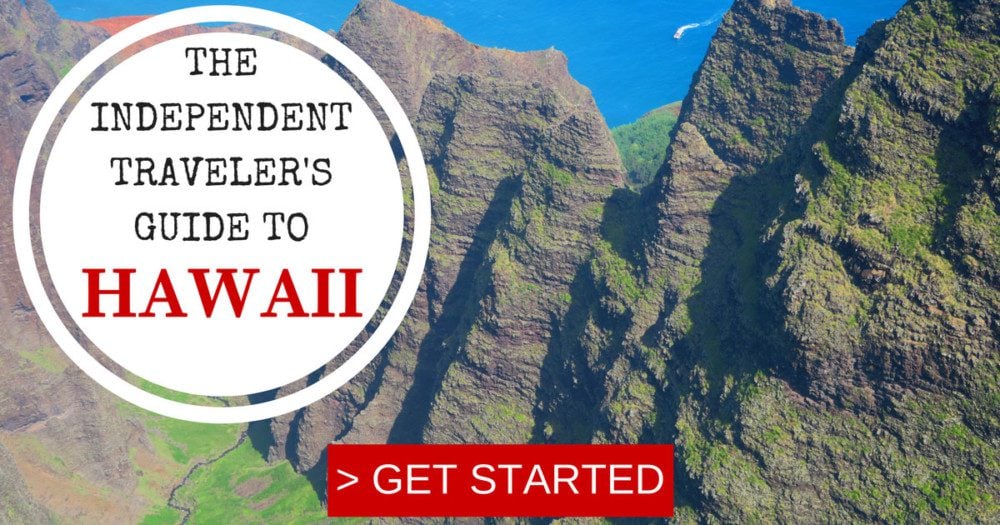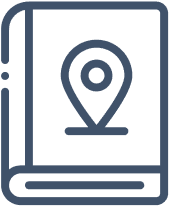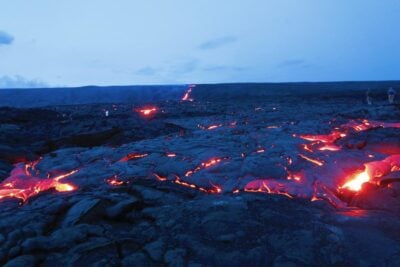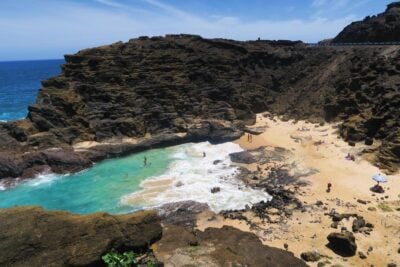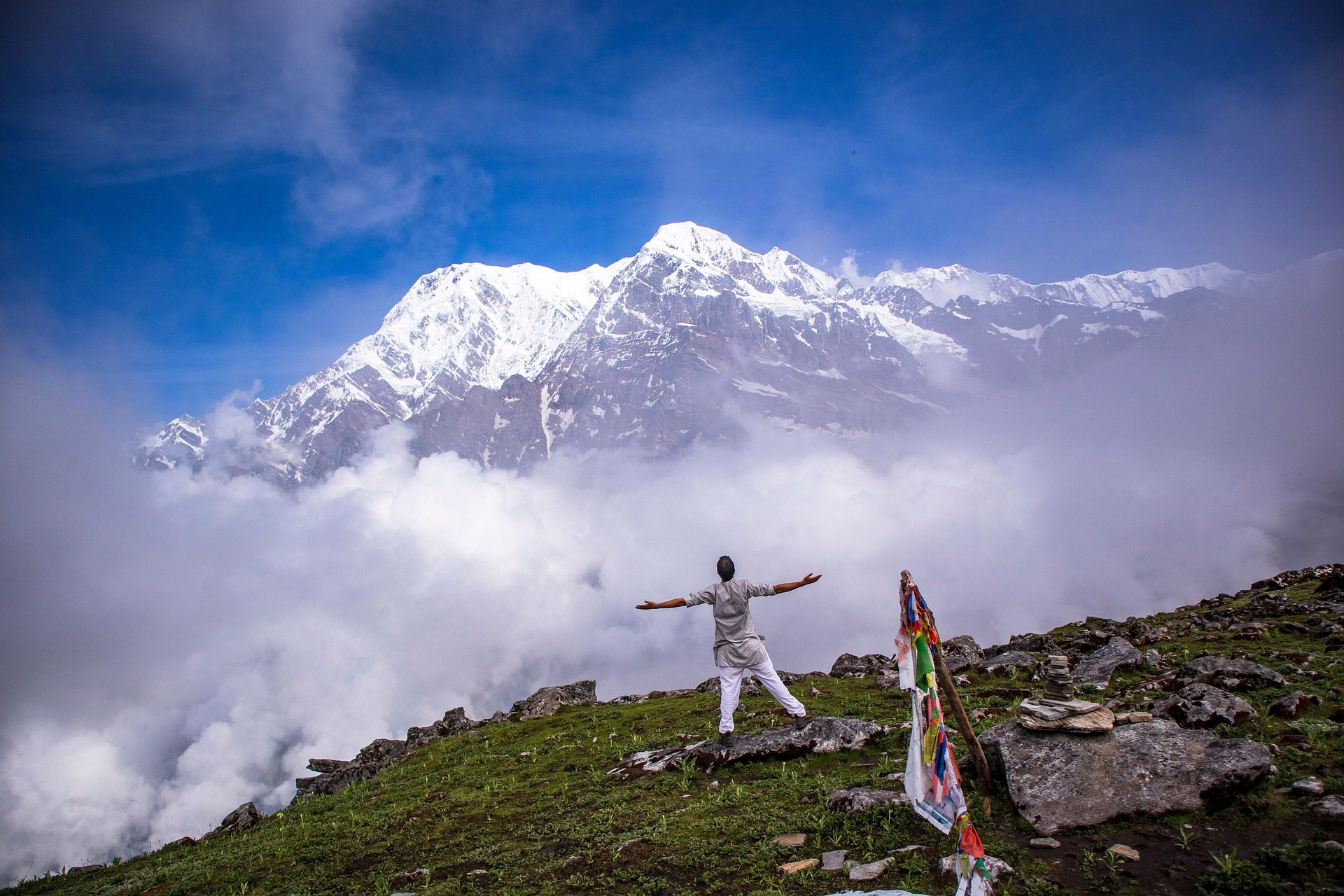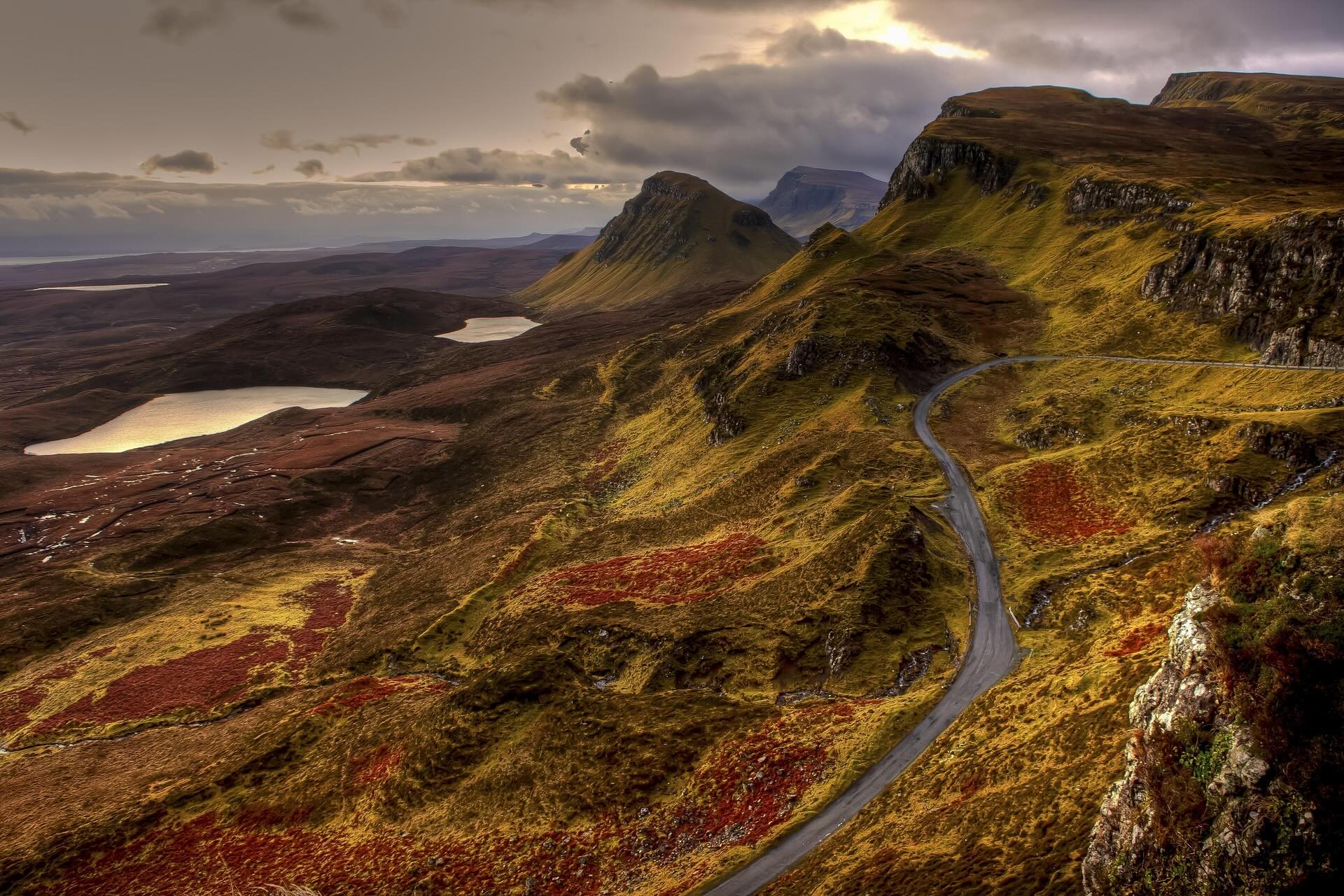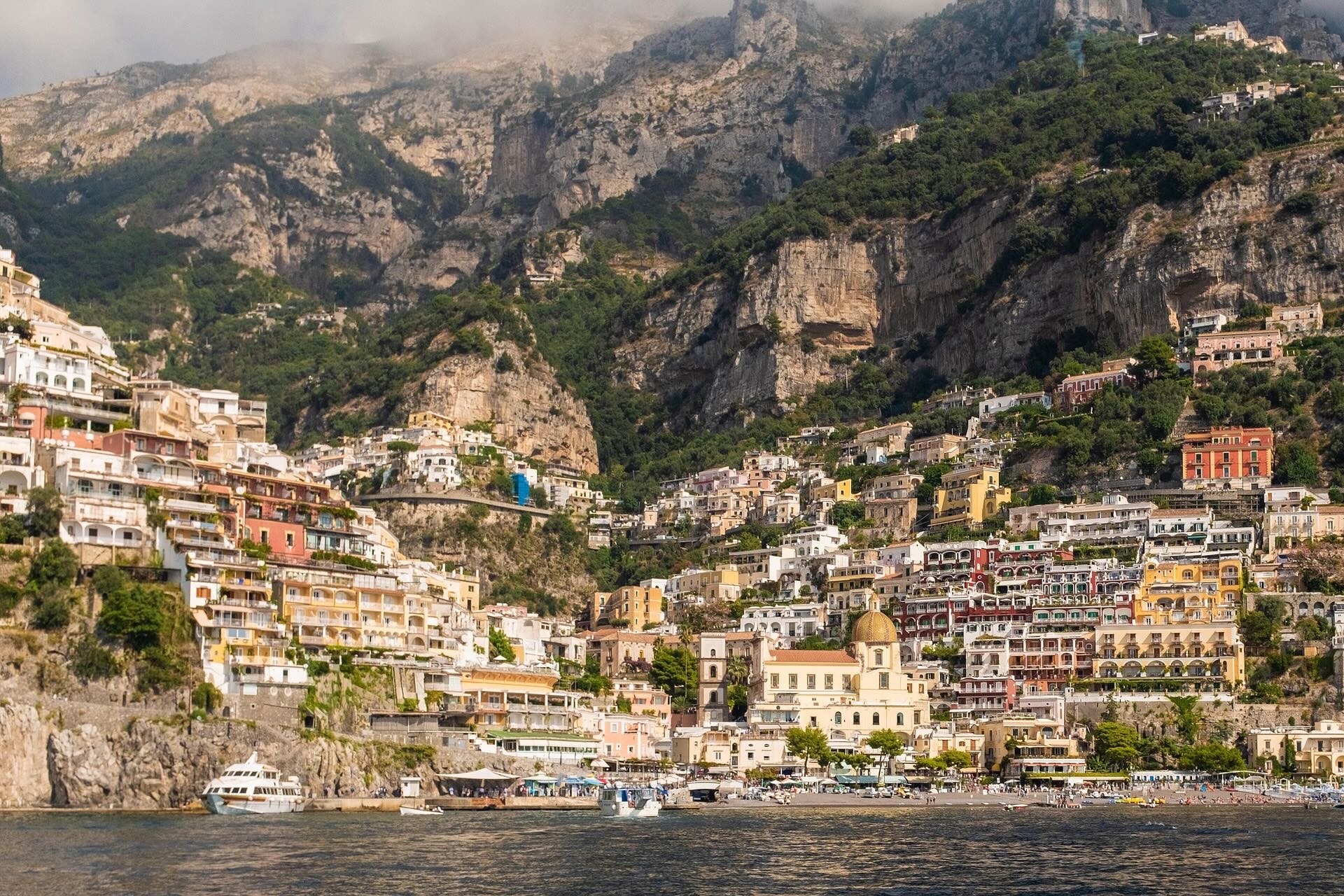5 Days In The Big Island Itinerary
Few are the places in the world where you can snorkel in pristine tropical water and hike on a snowcapped volcano in the same day. But the Big Island of Hawaii is all about contradicting experiences. After all, 11 of the 13 microclimates that exist on our planet are present on the island. And they don’t call it the Big Island for nothing, a diverse paradise larger than the rest of the Hawaiian Islands put together. This Big Island itinerary covers the very best the island has to offer in up to five days.
I spent three magical months on the Big Island while volunteering on the Kona Coast. Like in all Hawaiian islands, there’s a wide range of organized tours and activities offered to visitors. In this Big Island itinerary, we’ll mainly focus on self-guided activities, but I’ll also highlight guided excursions worth considering.
Why Visit The Big Island?

Where else can you visit a tropical rain forest in the morning, play in the snow in the afternoon and enjoy the sunset with a beach cocktail?
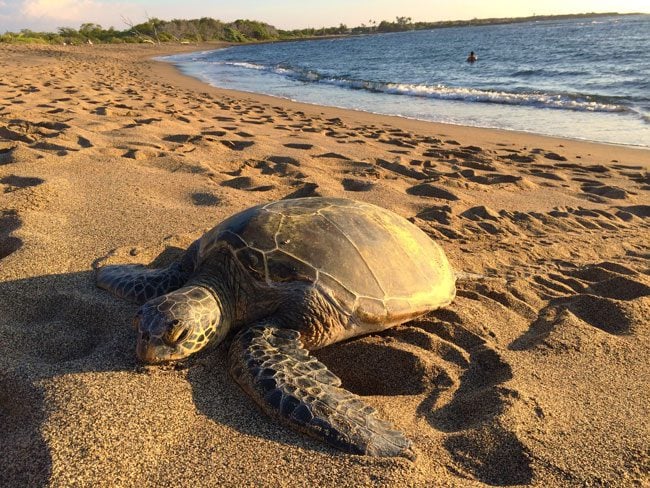
The Big Island offers endless ways to explore nature by car or on foot, not to mention soft sand in every possible shade of color.
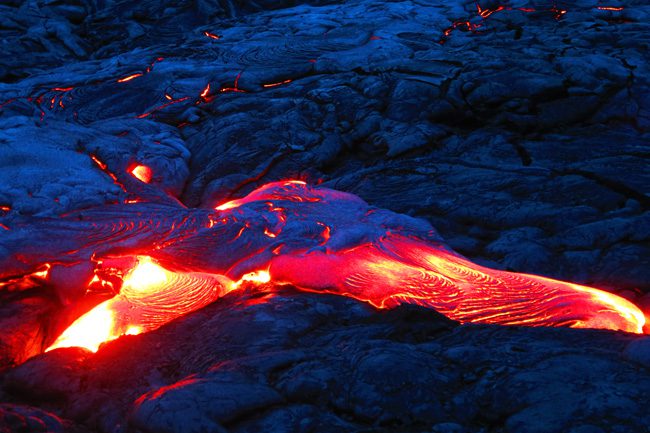
Home to Kilauea, one of the most active volcanoes in the world, fire is the Big Island’s dominant element.
Several sections make up this itinerary. Pick and choose the days that appeal to you the most and make them a part of your Big Island adventure.
- Day 1: Essential Big Island Tips, Kona Beaches & Kailua Town [This Page]
- Day 2: Waimea, Pololu & Waipio Valleys
- Day 3: Snorkeling, Mauna Kea, Diving with Manta Rays
- Day 4: Hawaii Volcanoes National Park
- Day 5: Hilo, Akaka Falls & Lava
Additional Resources
Explore additional Big Island and Hawaii travel resources, including sample itineraries, guides to the best beaches and hikes, and the must-see highlights in all five of Hawaii’s major islands. Aloha!
Big Island Video Tour
Big Island Itinerary Map
The following map features all the places mentioned in this Big Island itinerary. Simply click on the image to open it in Google Maps.
Big Island Travel Tips
This section of the Big Island itinerary covers essential planning tips. Also, go over what you need to know before visiting Hawaii, where you’ll find general advice on visiting the Hawaiian Islands.
When is the best time to visit the Big Island?
The weather and peak tourist season are the most important factors when planning a visit to the Big Island. Hawaii’s islands are a popular year-round destination. However, the most optimal weather is between April and September. Considering school holidays, the best time to visit the Big Island is April, May, June, September, and October.
The Big Island’s Diverse Weather
The Big Island’s landscape is diverse, and so is its weather. You can experience 11 of the world’s 13 climate zones on the Big Island. So, as expected, the weather can significantly vary and be hard to forecast. Generally, the Kona side (west coast) is sunny and dry, while the Hilo side (east coast) is tropical and wet. The middle (Mauna Kea and Mauna Loa) can experience snow or extreme sunlight. It’s very cold once the sun sets.
Your best bet is to check the National Weather Center’s website, where you can drill down by region or zone. However, unless it’s a completely cloud-free day (or completely stormy), take the weather forecast with a big grain of salt. It can change quickly and be highly unreliable. It’s key to understand which climate zones you’ll visit on a particular day and pack accordingly.
Another thing to note is the vog (volcanic fog). The volcanic activity from the Kilauea Volcano releases gasses into the air which are typically carried towards the Kona side, resulting in hazy conditions and respiratory challenges for those susceptible to such conditions.
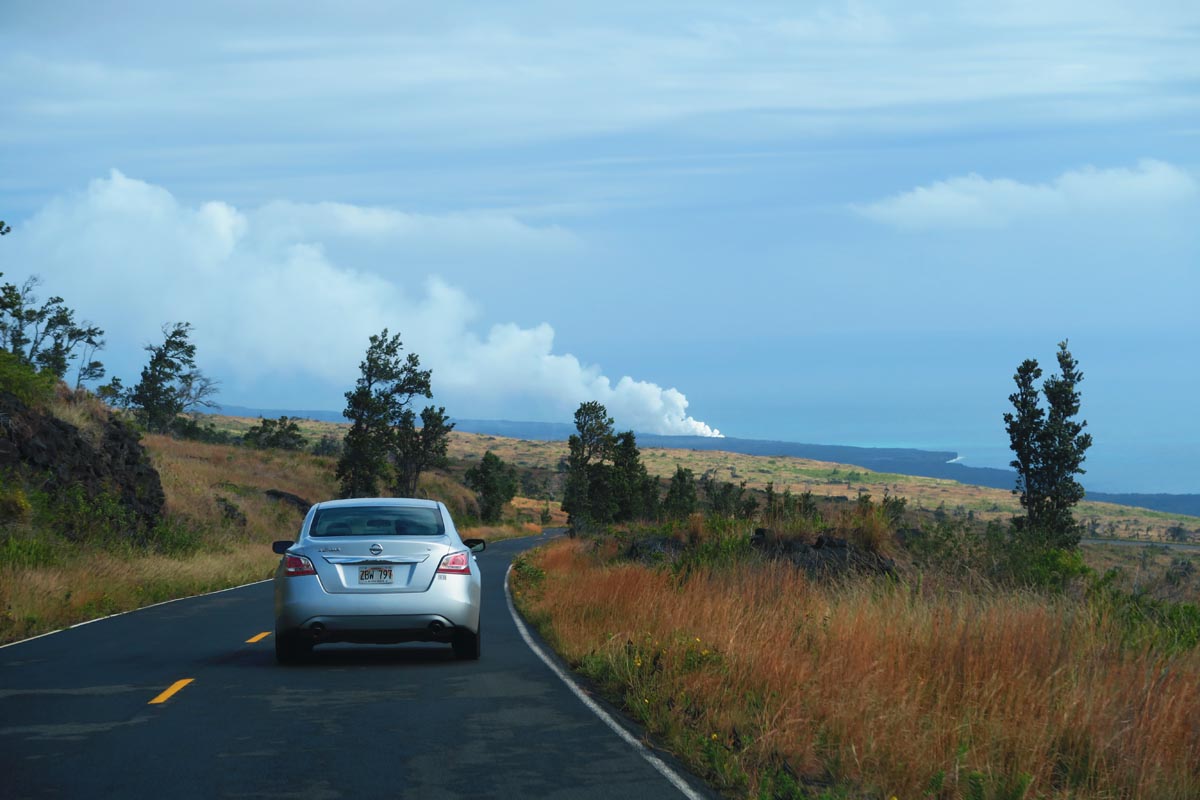
Where to Stay on the Big Island
If the main reason for visiting the Big Island is its beaches, base yourself on the sunny Kona Coast. However, if you truly want to explore the Big Island, split your time between the Kona Coast and the Hilo region. This way, you’ll greatly reduce driving times and maximize your sightseeing. The Hilo side is close to Volcanoes National Park, while the Kona side is near the island’s best beaches, snorkeling spots, and Pololu and Waipio Valleys.
Kona vs. Hilo
The difference between the west coast (Kona Coast) and the east coast (Hilo) is worth mentioning. The Big Island’s west coast is home to many of the island’s top beaches, resorts, and snorkeling spots. It is also the drier side of the island, which means more sunshine! The east coast is wetter and tropical, with many residents living off organic farming. It offers more of that stereotypical Hawaiian island feel but also requires navigating through rainy periods of the day. Bot Kona and Hilo have busy airports. Make sure you book flights to the correct airport.
Beach Resorts on the Big Island
With few exceptions, the Big Island’s top beach resorts are located in Waikoloa, about 45 minutes north of Kailua-Kona. Here, you’ll find an array of romantic and family-friendly beach resorts, usually fronting top-notch beaches. They offer a variety of activities ranging from golf to watersports and scenic helicopter flights.

Bed & Breakfasts on the Big Island
Good bed and breakfasts are in short supply on all Hawaiian islands. If you’re looking for a quiet stay with some character, search for options in small towns on the slopes of the Hualalai Volcano. Overlooking the Kailua-Kona Coast, this is the Big Island’s prime coffee-growing region and home to several “artsy” villages. Villages such as Holualoa, Captain Cook, and Kealakekua could have something attractive for you.
The Lilikoi Home
I volunteered for three months at a lovely bed and breakfast in Holualoa. With stunning views and a lush tropical setting, the bed and breakfast also doubled as a working coffee farm. Recently, the owners converted their highly-acclaimed bed and breakfast to a vacation rental. The Lilikoi could be the ultimate place to base yourself while exploring the Big Island with your family or friends. You can rent the entire home, or settle for the top floor or the bottom floor.
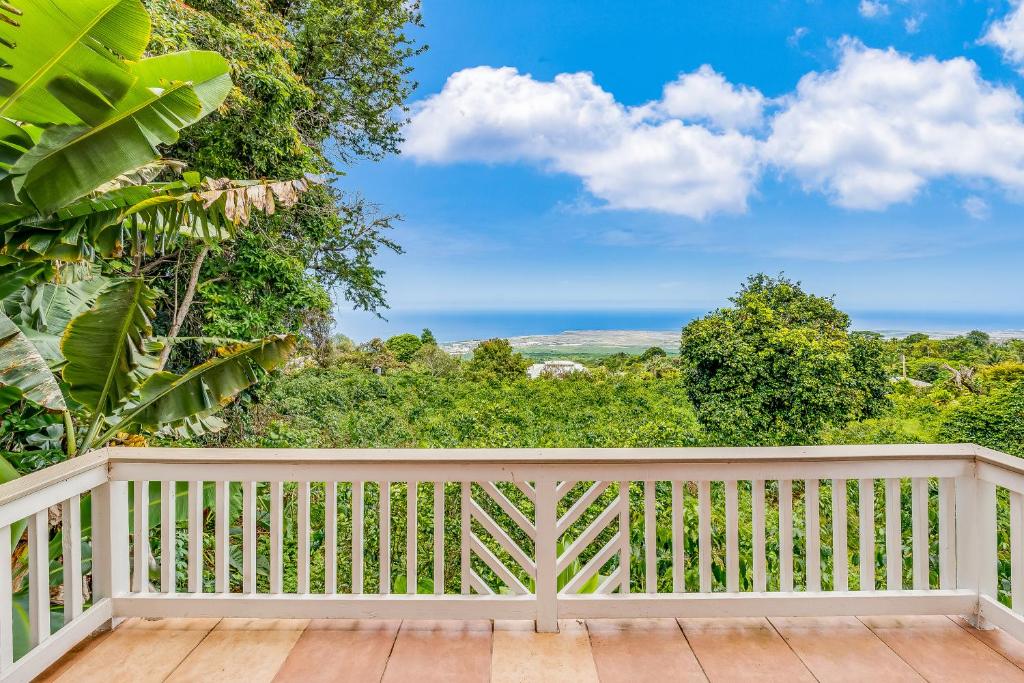
What to Pack
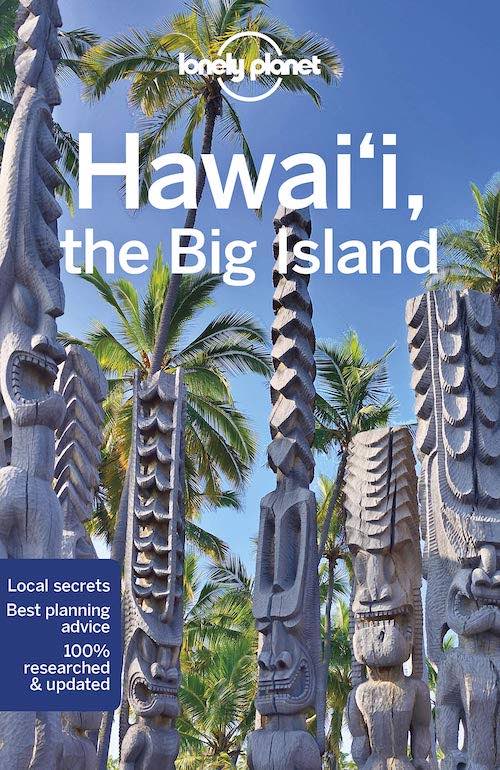
To properly explore the Big Island, you’ll need the right gear for the island’s myriad of activities and climates. For example, be ready for the beach with reef shoes and snorkeling gear, for the hikes with proper shoes, walking poles, and quick-drying clothing, for the tropical areas with rain gear, and for the high peaks with proper winter clothing (that’s right!).
With this Big Island itinerary, I also recommend grabbing a Lonely Planet Guide to the Big Island and, if visiting other islands, perhaps also Lonely Planet’s Best of Hawaii. These guidebooks provide useful information at your fingertips and give a better understanding of Hawaii’s culture and history. They make for a great souvenir in your travel library.
Have a look at this page for packing recommendations.
How to Get Around the Big Island
They don’t call it the Big Island for nothing! Travel times from point A to point B can sometimes take well over an hour, so renting a car on the Big Island is essential if you’re here for proper sightseeing.
The Big Island By Car
My advice is to rent a car upon arrival at the airport for the entire duration of your visit and simply drop it off before your return flight. Nearly all car rental companies are located at the airport; competition means decent prices, especially out of season.
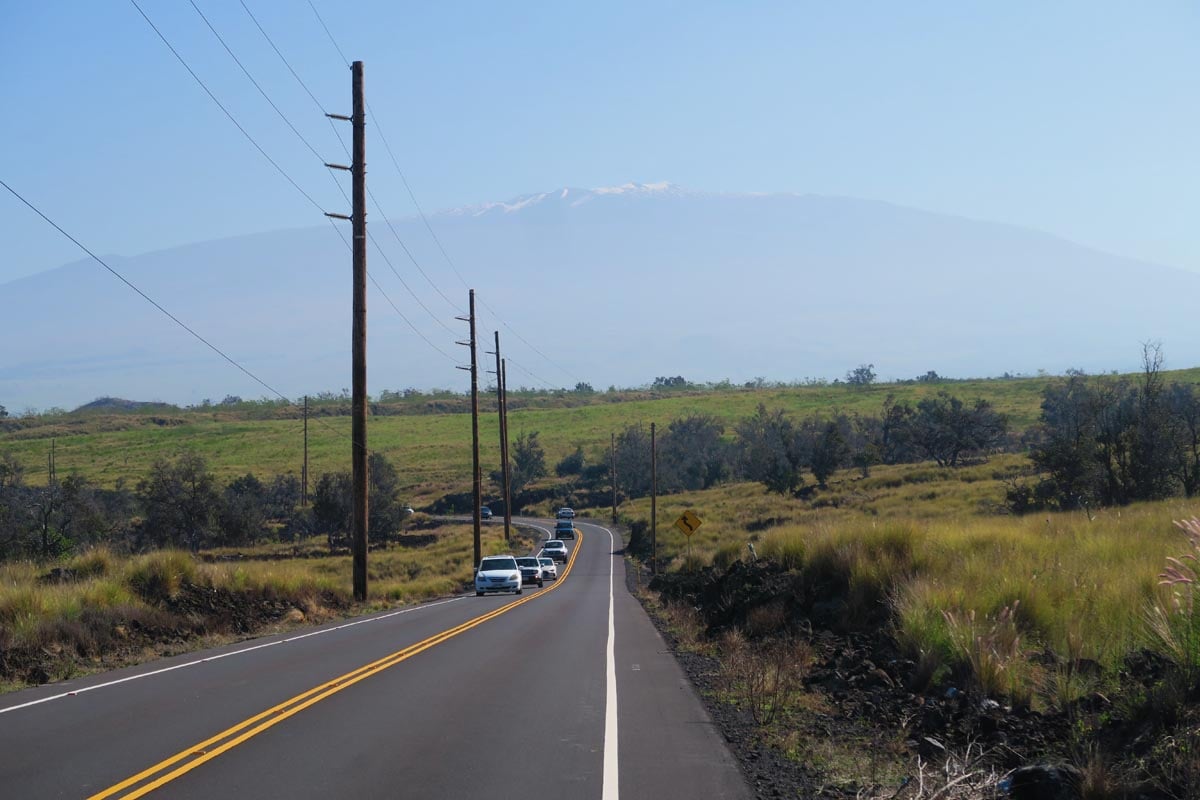
Remember that apart from the long driving times on the Big Island, road conditions may not allow you to drive at the speeds you’re used to from back home. You often drive at 30-40 mph or agonizingly stuck behind a slow-moving vehicle on a one-lane road. Moreover, the roads near Hilo and Kailua-Kona can congest traffic during rush hour and weekends.
Renting a 4WD will come in handy (if the price is right) as it will allow you to drive to the very summit of Mauna Kea, and down to the floor of the Waipio Valley. It’s not the end of the world, however, if you rent a regular 2WD.
The Big Island by Bus
The Big Island’s bus service has improved in recent years, and it no longer just connects Hilo with Kailua-Kona. It’s an inexpensive way to get around the Big Island, but it’s still more of a point-to-point bus rather than something tourists can rely on for a smooth itinerary.
Cycling on the Big Island
Cycling is quite common on the Big Island, but due to the vast distances and changes in elevation, this is more a sport than a means of getting around. Cyclists will find miles of cycling lanes with lots of respect given by drivers.
Hitchhiking on the Big Island
Hitchhiking is not that common among locals but is quite common among backpackers and young visitors. You should have no problem flagging a ride within a few minutes, but, as always with hitchhiking, it’s best to avoid traveling solo and always listen to your gut feeling.
Staying Safe on the Big Island
The Big Island is a very safe travel destination, but, as always, some caution is required. Here are a few important safety tips, organized by subject.
- You might drive a lot on a given day. Take note that driving at night on country roads can be tiring, and the light from oncoming traffic can feel blinding without street lighting. Stop for a stretch here and there.
- Don’t leave anything visible in the car and the trunk, if possible. Car break-ins are unfortunately common in some parts of some of the islands in Hawaii.
- If you’re driving from Kona to Hilo (or vice versa) via Saddle Road, fill up the tank and avoid overheating your brakes by shifting into lower gear in downhill sections.
- Big Island beaches can sometimes be dangerous with high surf and strong currents. State parks will have proper warning signs, but unofficial beaches will not. It’s best not to venture into the water during high surf periods and to avoid swimming on beaches without lifeguards during periods of rough ocean.
- Note that the official state and county beach park entrance is often restricted to specific times. If you don’t want to get locked out, read the signs before crossing the gate. Don’t worry too much about this, though, as gates usually close after sunset.
- Having access to mobile data and phone calls is highly recommended. This will help with directions, understanding driving times, and making calls when needed. T Mobile has good phone and data plans for visitors to the Big Island, but in any case, download an offline Google Map of the Big Island to your phone.
- If hiking off the beaten track (especially Mauna Kea and Mauna Loa), have proper equipment, check weather reports, and inform park rangers or your hosts about your estimated arrival time.
- Always pack accordingly and take extra layers/water/food.
- If you’re suffering from asthma or other respiratory conditions, stay updated with the Big Island weather forecast, as vog and haze on the Kona coast can make breathing difficult for some people and cause severe headaches.
- Stick to official trails and walking paths around the Kilauea Volcano.
Day 1: Kona Coast Beaches & Kailua Town
We’ll spend the first day of this Big Island itinerary on the sunny Kona coast, with a bit of beach-hopping and a visit to the charming historic town of Kailua-Kona. This is a relaxing day to ease into your Hawaii vacation. I’ll briefly mention several recommended beaches for today in the Kona area. For more information about these options and other potential stops, check out the guide to the Big Island’s best beaches.
Cool Lava Tube
If you do decide to venture inside the lava tube, do this at your own risk. The busy highway noise quickly fades away as you enter a maze of “volcanic pipelines“. It is said that this particular lava tube runs deep inland.
If you’re driving north from Kailua to the beaches or coming south from the Waikoloa resorts, pull over around mile marker 90 (you’ll likely see a few cars already parked) and check out a massive lava tube. Authorities might now restrict access to the lava tube, so just enjoy the view from outside.

Kua Bay
Manini’owali Beach – better known as Kua Bay – is part of Kekaha Kai State Park, a dreamy section of the Kona Coast that hides four spectacular beaches amid a vast and barren lava field. Kua Bay is the only beach within the park that is accessible via a paved road, which means that parking can be challenging on weekends and holidays.
The beach is a beautiful blend of azure waters, rocky outcrops, and soft white sand. Swimming is hazardous when the surf is up, but bodyboarding is at its best. Need another reason? Where else can you swim in a tropical beach with palm trees around you while a snow-capped volcano looms in the distance?

Mahai’ula Beach
Mahai’ula Beach is my favorite beach on the Big Island and maybe even Hawaii. It is also part of Kekaha Kai State Park but reached via its southern entrance. Once you pull over from the main road, drive for about 20 minutes on a rough, unmaintained road. However, a 4WD is not needed (just take it slow). Just before the main parking lot, you’ll see a metal chain restricting access to a dirt road that leads to the beach. Grab your stuff, hop over the chain, and head to paradise!
The beach is stunning, with soft, sloping salt and pepper sand, clear waters, and palm trees galore. But the best part? Because Mahai’ula is more challenging to reach, it’s a prime destination for escaping the crowds. From this remote spot, you can also further hike to Makalawena Beach.
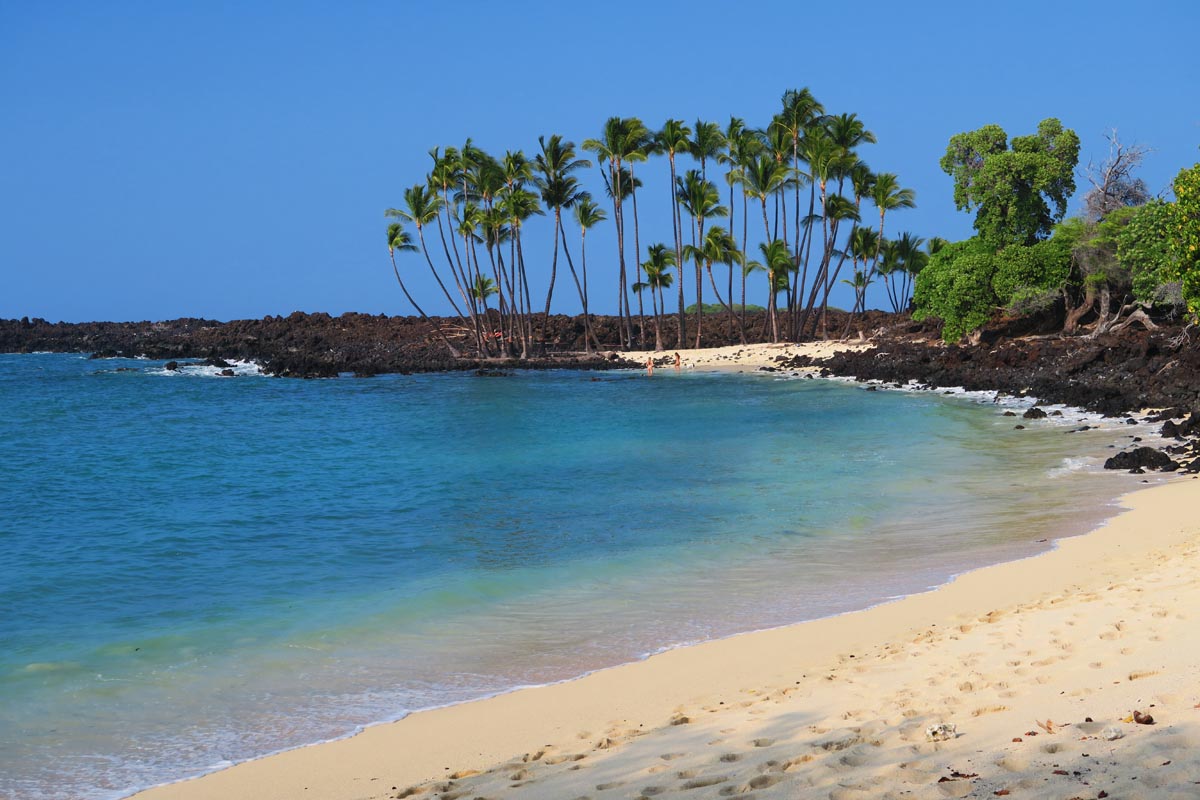
Waikoloa Beaches
The Waikoloa resort area is home to several fine beaches backed mainly by one or more large resorts. An exception to this is Hapuna Beach State Park, a beautiful half-mile stretch of fine golden sand (parking fees apply for non-Hawaii residents). Though lifeguards are on duty, be cautious of rough swimming conditions during high surf periods. I visited Hapuna on a very windy day when staying close to the beach was brutal. However, if the seas are calm, the lack of rocks makes Hapuna a perfect swimming spot, and snorkeling is possible off the rocky cove.

Hang Out with Sea Turtles
After catching some color and before heading to Kailua-Kona, go for a stroll along Honokohau Beach and get acquainted with the Big Island’s cutest residents – the Green Sea Turtles. The beach is part of Kaloko-Honokōhau National Historic Park. Park your car at the small harbor and pick up the beach trail at the signposted gate.
The Green Sea Turtles are VIP residents on the Big Island – a protected species awarded with a 20ft (6m) restraining order from humans. Their favorite activity is to laze on the beach and bake in the sun’s warm rays. Visitors to Honokohau Beach (along with Kiholo Bay) are practically guaranteed to see green turtles. I recommend adding this stop to your list, especially if traveling with children. Apart from the sea turtles, the beach is lovely and long enough for everyone to find a quiet spot. It’s also a prime spot for watching the sunset on the Big Island.

Kailua Town
The Big Island’s tourist hub, Kailua-Kona, is a laid-back upscale beach town worthy of a visit. I loved coming down here from my mountain home in Holualoa to watch the sunset, grab a bite and a drink, and do some people-watching. Nowadays, the town is 100% focused on tourism but has a deep historical significance. Kailua was the seat of King Kamehameha the Great’s government before he unified the Hawaiian islands.
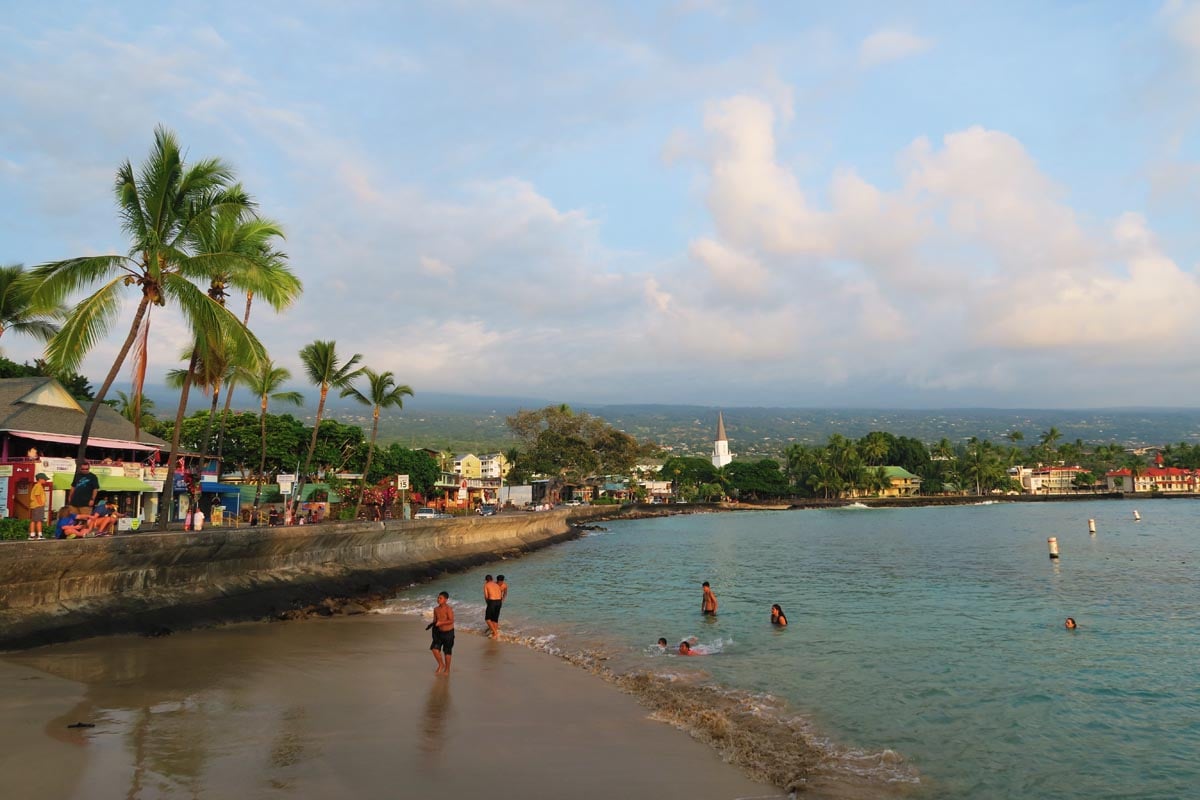
Kailua’s outskirts are where you’ll find your Walmart, Target, and all those other lovely mainland wonders, but its charm centers around Ali’i Drive – the seaside thoroughfare where you want to spend most of your time. I recommend parking near the pier and begin strolling along Ali’i Drive.
This seaside walk offers a glimpse of local life on the wealthy Kona coast while enjoying the town’s main attractions and dining options. Be sure to check out Mokuaikaua Church – the oldest church on the island, Hulihe‘e Palace (if it’s open), its adjacent giant banyan tree, and Hale Halawai Park – a great spot for watching the sunset. You’ll also pass a plethora of souvenir shops and tour operator stands.

Shaved Ice & Sunset Cocktails
If you haven’t already done so, it’s time to taste Hawaii’s signature dessert – shave ice! It just so happens that Kailua is home to the island’s best place for shave ice – Scandinavian Shave Ice. We’re talking about a large slab of ice mechanically shaved to perfection and topped by your flavored syrup. It doesn’t sound like much, but you can’t beat it on a warm day!
Fancy a cocktail over shaved ice? Not a problem! Head to Chill’n On The Bay and enjoy the sweet pace of life with a maitai in your hand. Another good spot for sunset drinks is On The Rocks – a classic beach bar with a sandy bottom and a generous drinks menu. If you come here after dinner, there’s a good chance to catch some local live music. For an authentic Polynesian experience, head to Kanaka Kava and experience what it was like to get a ‘buzz’ before alcohol arrived on the islands.
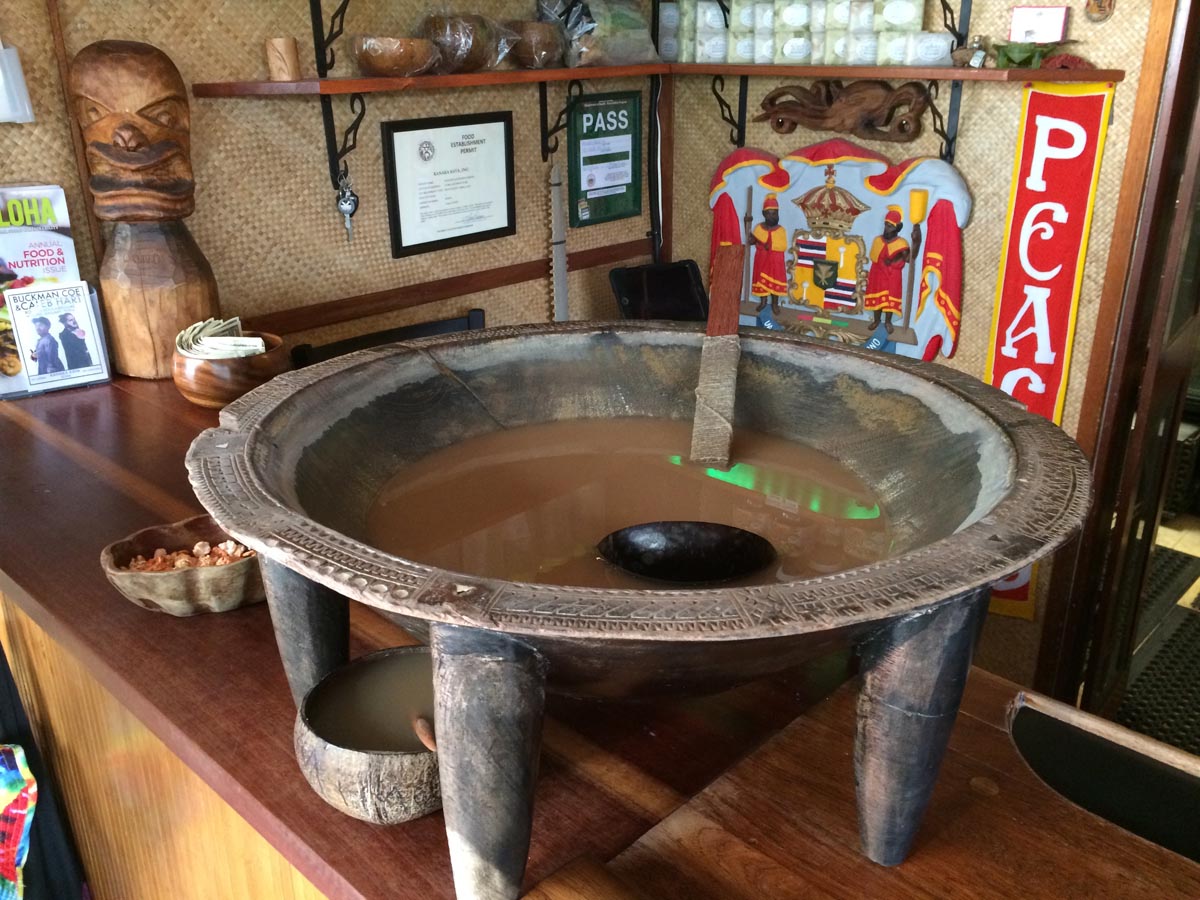
Dinner or Luau Show
Make reservations at Umekes Fish Market Bar & Grill to taste great Hawaiian food. It’s well worth the five-minute drive from the center of Kailua, especially if you haven’t already gobbled up a poke bowl – my absolute favorite Hawaiian dish. Raw chunks of fresh red tuna are marinated in various yummy flavors (soy, oyster sauce, wasabi, spicy mayonnaise, and more) and served on a bed of white rice sprinkled with spices. If beachfront dining is what you’re after, make reservations at either Island Lava Java (facing the beach across Ali’i Drive) or On The Rocks.
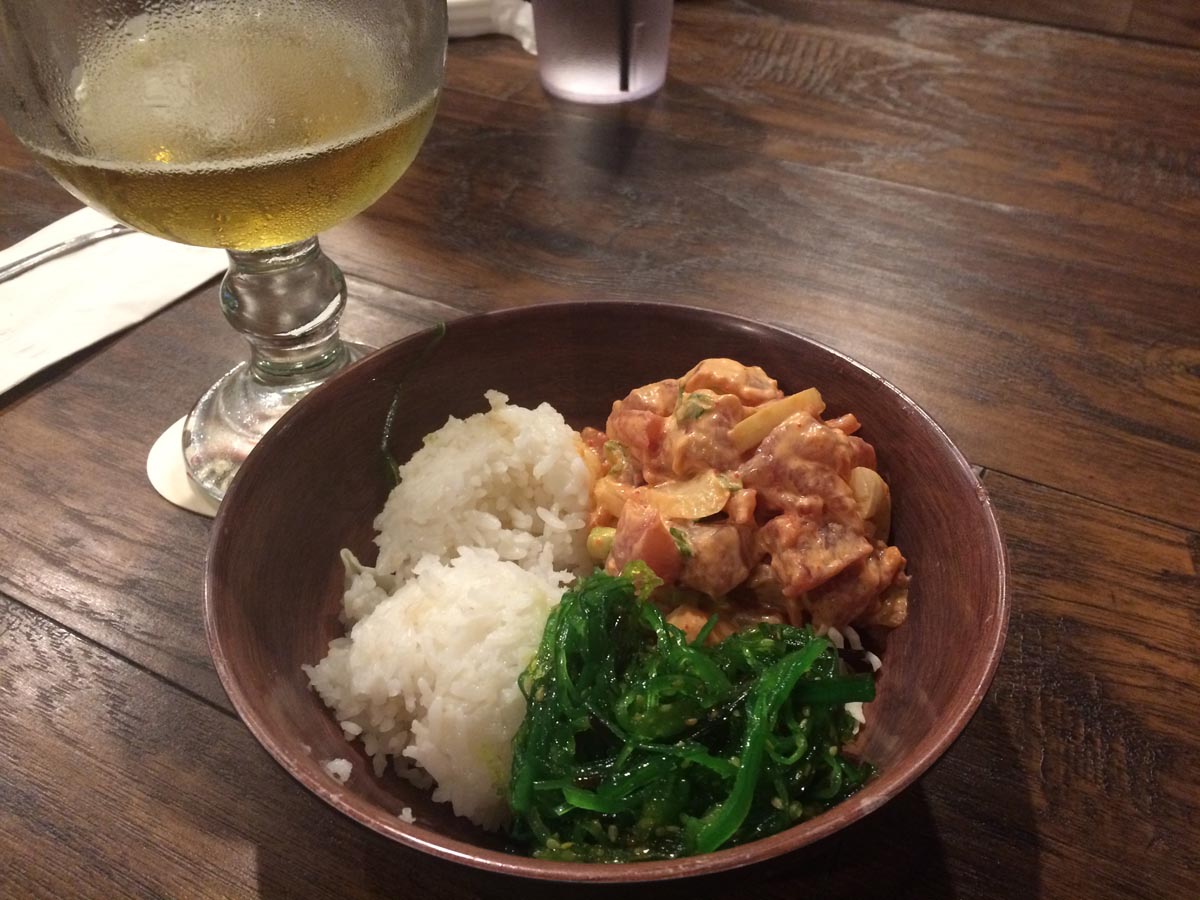
Another good dinner option is to take part in a luau and treat yourself to a spectacular Polynesian fire and dance show to go along with dinner. The best luau on the Big Island is currently the Island Breeze Luau at the Marriott. The price of admission is a bit steep, but you must experience it when visiting Hawaii.
Local Nightcap
Don’t want to go to sleep quite yet? Head to Sam’s Hideaway and hang out with the locals. There’s nothing fancy about this typical small-town bar, just cheap drinks and karaoke.
